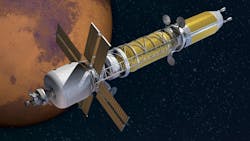Lockheed Martin Acquires Aerojet Rocketdyne for $4.4 Billion
Lockheed Martin Corp. has entered into a definitive agreement to acquire Aerojet Rocketdyne Holdings, Inc. for a total transaction value of $4.4 billion. Aerojet Rocketdyne is a leading manufacturer of aerospace and defense rocket engines globally recognized for its innovative propulsion technologies. With 15 primary operation sites across the U. S. and almost 5,000 employees, Aerojet Rocketdyne had 2019 revenues approaching $2 billion. The transaction is expected to close in the second half of 2021 subject to closing conditions. A transition team is being formed for seamless integration of the companies and personnel.
Regarding the acquisition, Lockheed Martin president and CEO James Taiclet said: “Acquiring Aerojet Rocketdyne will preserve and strengthen an essential component of the domestic defense industrial base and reduce costs for our customers and the American taxpayer.” He added: “This transaction enhances Lockheed Martin's support of critical U. S. and allied security missions and retains national leadership in space and hypersonic technology. We look forward to welcoming their talented team and expanding Lockheed Martin's position as the leading provider of 21st century warfare solutions.”
Aerojet Rocketdyne’s advanced propulsion systems are already part of Lockheed Martin’s supply chain and essential to Lockheed’s aeronautics, missiles and fire control, and space business areas. As an example, Aerojet Rocketdyne is developing nuclear thermal propulsion (NTP) engine system technologies projected to support deep space exploration and transportation of human passengers. The NTP rocket engines feature much higher efficiency than traditional cryogenic liquid-fuel propulsion systems such as liquid-oxygen/hydrogen-fueled rocket engines and with the capability to be reused over several missions, enabling the creation of a solar taxi for exploration of deep space.
About the Author
Jack Browne
Technical Contributor
Jack Browne, Technical Contributor, has worked in technical publishing for over 30 years. He managed the content and production of three technical journals while at the American Institute of Physics, including Medical Physics and the Journal of Vacuum Science & Technology. He has been a Publisher and Editor for Penton Media, started the firm’s Wireless Symposium & Exhibition trade show in 1993, and currently serves as Technical Contributor for that company's Microwaves & RF magazine. Browne, who holds a BS in Mathematics from City College of New York and BA degrees in English and Philosophy from Fordham University, is a member of the IEEE.
